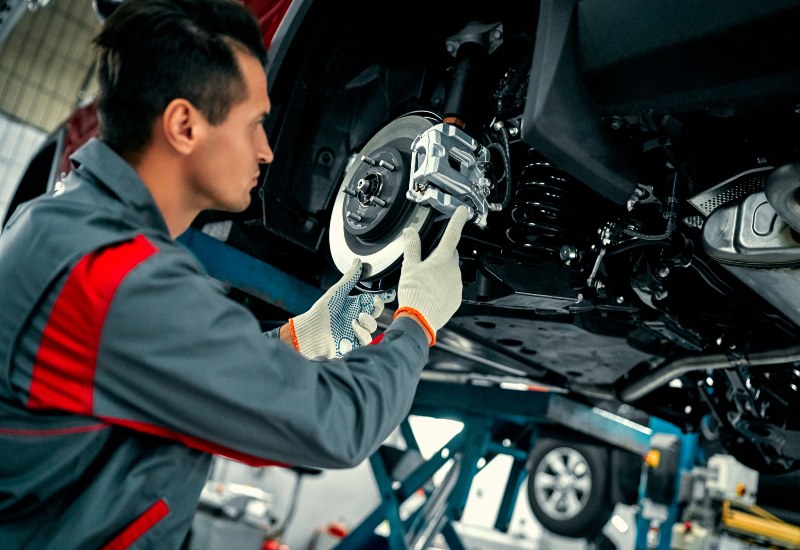Dr Brakes Complete Auto Repair: Auto Repair Margate, FL - FL
Diagnostics for Brake Pedal
Your car's brake pedal is an important part of the braking system, and its proper operation is crucial for your road safety. It's critical to identify and fix problems with your brake pedal as soon as possible. We will discuss brake pedal diagnostics, common issues, and how to fix them in this article.
1. 1. Pedal with a sponge brake
Royal Palm Community, FL Auto Repair - Dr Brakes Complete Auto Repair Total Car Care
Many drivers frequently experience problems with their brake pedals being spongy. The brake pedal feels soft and lacks the firmness you'd expect when you press it. This issue might be brought on by:
- Air in Brake Lines: Hydraulic pressure can be decreased when air becomes trapped in the brake lines. This problem can be resolved by bleeding the brake system.
- Brake Fluid Leak: A spongy pedal can be caused by a leak in the brake lines or an incorrect brake caliper. Look for any obvious leaks and fix them if necessary.
2.. 2. Pedal with a low brake
When you press your brake pedal, it may sit unusually low or closer to the ground, which may be a problem. Possible causes include the following:
Brakes - Dr Brakes Complete Auto Repair - Royal Palm Community, FL
- Worn Brake Pads: A lower pedal and decreased braking effectiveness can result from wearing worn brake pads. Check your brake pads and replace any worn ones if necessary.
- Brake Fluid Leak: As was already mentioned, a leak in the brake fluid can lead to many different problems, such as low pedals. Look for leaks in the calipers and brake lines.
3. 3. Hard Pedal Brake
A spongy or low brake pedal can be just as problematic as a hard one. Breathing may become challenging and less effective as a result. The following are possible causes of a hard brake pedal:
- Vacuum Leak: Many automobiles employ vacuum-assisted brake boosters. A hard pedal can be caused by a vacuum leak. Look for any leaks in the vacuum hoses and connections.
- Faulty Brake Booster: A hard pedal may result from a malfunctioning brake booster itself. The brake booster may need to be replaced in these circumstances.
4. Vibrations of the brake pedal
Kendall Green, FL Mobile Mechanic
While braking, if you experience vibrations or pulsations through the brake pedal, it may be a sign of several problems, such as:

- Warped Brake Rotors: Vibrations during braking can be caused by warped or unevenly worn brake rotors. Rotors can be resurfaced or changed as necessary.
- Wheel Alignment Problems: Uneven tire wear and brake pedal vibrations can result from improper wheel alignment. If necessary, have your alignment checked and fixed.
5.. 5. Noise from the brake pedal

Pressing the brake pedal can make strange noises that can be unsettling. The following are some potential sources of pedal noise:
Dr Brakes Complete Auto Repair - Brake Repair & Service in Lighthouse Point, Pompano Beach, FL
- Brake Pad Wear Indicators: Wear indicators are frequently included with contemporary brake pads. These indicators may squeak or scrape when the pads become worn out. If you hear this noise, replace the brake pads.
- Loose brake components: When you apply the brakes, rattling or clunking noises can be heard coming from loose calipers, bracket, and other brake parts. Examine and secure any loose components.
6. Brake Response Delay
It's important to look into if you notice a delay between pressing the brake pedal and the actual braking response of your vehicle. The following can cause a delayed brake response:
- Brake fluid contamination: Contaminated brake fluid can make it less effective at transferring hydraulic pressure. The brake fluid can be flushed and replaced to help with this problem.
- Brake Caliper Problems: Settled or sticky brake calipers can cause a delay in response. Check the calipers and, if necessary, replace them.
In conclusion, the brake pedal is an important part of your car's braking system, so any problems with it need to be fixed right away to guarantee your safety while driving. Your brake pedal can be kept in top shape with regular maintenance, inspection, and prompt repairs, enabling dependable and responsive braking.
image source visit this website